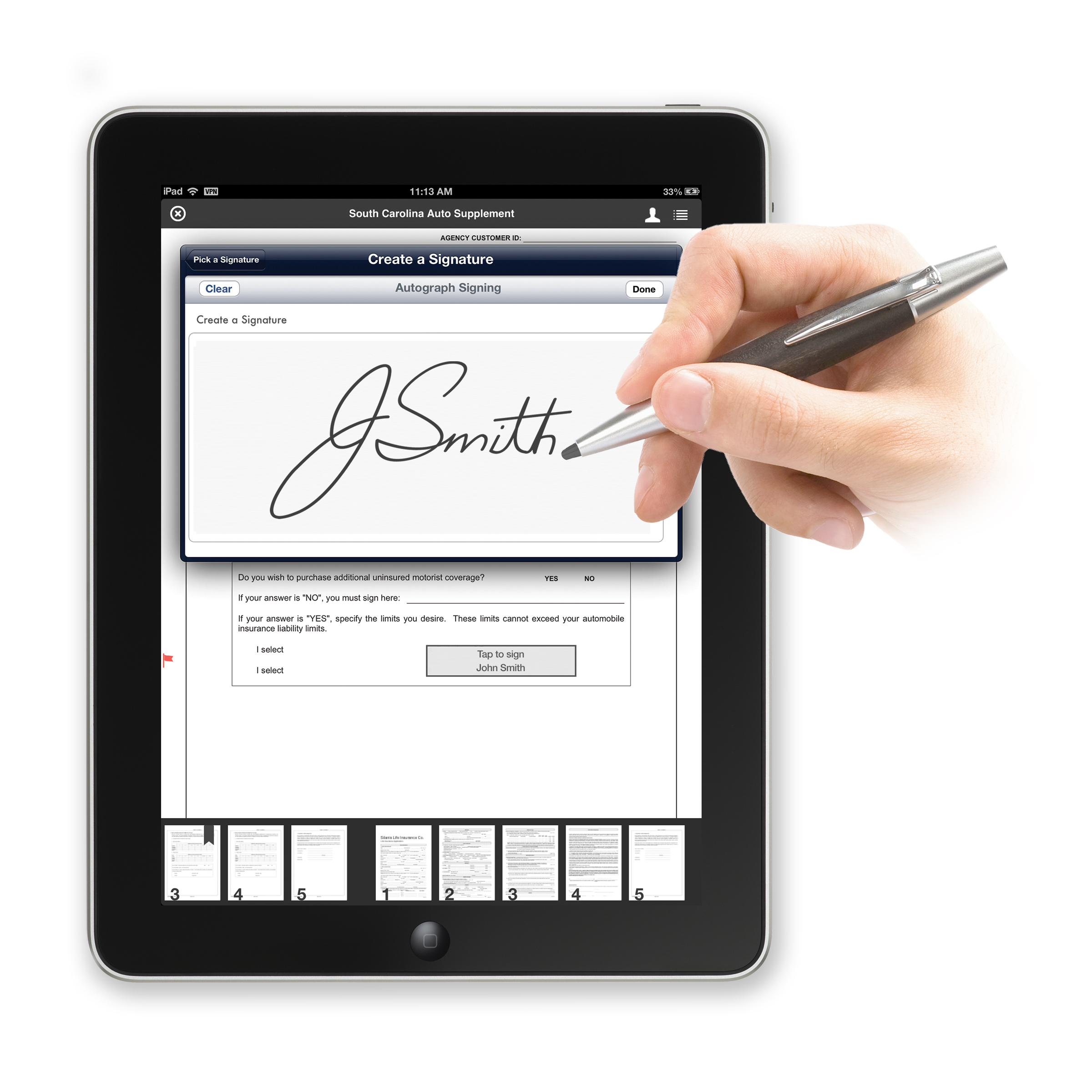Technology
4 Questions CPAs Should Ask Before Adopting E-Signatures
Oct. 26, 2016

With the fourth quarter in full swing, CPAs and tax preparers will likely find themselves on the hunt for technology that will make the upcoming tax season more efficient—and a bit more bearable—than the last.
Many CPAs will explore using electronic signatures for the first time. E-signatures, after all, facilitate online tax returns, which continue to rise each year. The IRS’s most recent filing statistics show that more than 123 million e-filings were processed in 2016—a 2.6 % increase over 2015. E-signatures also improve security of signed documents, make tax season more convenient for clients and reduce the paper processing and storage burden felt by firms.
But before you dive headfirst into e-signature usage, it’s important to prepare for the plunge by asking the right questions. Begin with these four:
Question #1: “Are the e-signatures IRS compliant?”
When you’re looking for e-signature legal and regulatory compliance, you’ll first turn toward federal and state regulations—the Electronic Signatures in Global and National Commerce Act (ESIGN) and the Uniform Electronic Transactions Act (UETA). It’s essential that these regulations are met, but these are really the minimum guidelines—the table stakes of e-signatures. These essentially say that an e-signature is a legal way to sign documents, so most e-signature services on the market will be compliant with the federal ESIGN and state UETA laws. They do not necessarily mean your e-signatures will be accepted by the IRS.
In order for e-signatures to be IRS compliant for forms 8878 and 8879, they must record the following data:
- Digital image of the signed form;
- Date and time of the signature;
- Taxpayer’s computer IP address (for remote transactions);
- Taxpayer’s login identification—user name (for remote transaction);
- Identity verification: “passed” results for remote identity authentication and, for in-person transactions, confirmation that government picture identification has been verified; and
- Method used to sign the record (e.g., typed name) or a system log or other audit trail that reflects the completion of the electronic signature process by the signer.
When signing remotely, the e-signature technology must be able to generate evidence that the signee is legitimate via knowledge-based identity authentication. Such verification occurs when a signee correctly provides his date of birth and Social Security number and then answers a series of detailed questions about information found in public databases from the past three decades. A signee only has three attempts to answer questions correctly.
Tax preparers will also need evidence that each signature is valid in case the e-filed transaction is ever called into question. Technology should be able to:
- Prove that your clients willingly and knowingly signed something; and
- Prove that the signature has not been altered and will remain valid over time.
Question #2: “What technology standards are important to our firm?”
There are many different types of technology standards that exist for e-signatures and document security. It’s worthwhile to consider which standards are important to your firm and then match those with the e-signature platform you choose. It’s another way to gauge the reliability of the technology you adopt.
A few standards for e-signatures to consider include:
- ISO 32000-1, a standard for PDF;
- RSA, a standard for encryption;
- SHA, a secure hash standard; and
- The National Institute of Standards and Technology’s standards for digital signatures (a type of electronic signature that permanently embeds the legal evidence of a signature into the document).
Ask any potential provider about published standards that their technology adheres to, and be sure to red flag any possible gaps.
Question #3: “Can e-signature technology be integrated into our other firm software?”
Chances are high that your firm is using some type of tax preparation software, and it’s a good idea to at least consider potential integration. That is, can your e-signature service integrate into the software that your staff and clients are already using? Or, is there a pre-integrated solution that combines e-signatures with another platform you may need for the upcoming season—such as document management?
Integrating e-signature capabilities into your software makes it easier for clients and staff to use the technology, because it allows you to have just one portal where documents can be prepared, signed and managed seamlessly.
Question #4: “Will our staff and clients actually use e-signatures?”
E-signatures won’t improve your cost savings, security or efficiency if staff and clients are unwilling to use it.
To encourage adoption, the software should be intuitive—not complicated. Look for simple interface designs and schedule demos to test out how easy (or difficult) it is to create a document and sign it.
Once you’ve selected a platform, then think about rollout strategy. For staff to feel comfortable using e-signatures for the upcoming tax season, start using e-signatures ahead of the filing wave.
Try holding training sessions before e-signatures become client-facing, and then pilot with a few simple forms. It’s also wise to develop a client communications plan to explain, several weeks ahead of the tax season, the process of using e-signatures and the benefits for your clients. This will give your clients an opportunity to learn about the technology and ask any questions before it’s time to get down to business.
————
Pem Guerry is the Executive Vice President at SIGNiX, a digital signature solutions provider that makes signing documents online safe, secure, and legal for any business. SIGNiX offers the only independently verifiable, cloud-based digital signature solution, which combines workflow convenience with superior security. Learn more about what makes SIGNiX different at www.signix.com.
